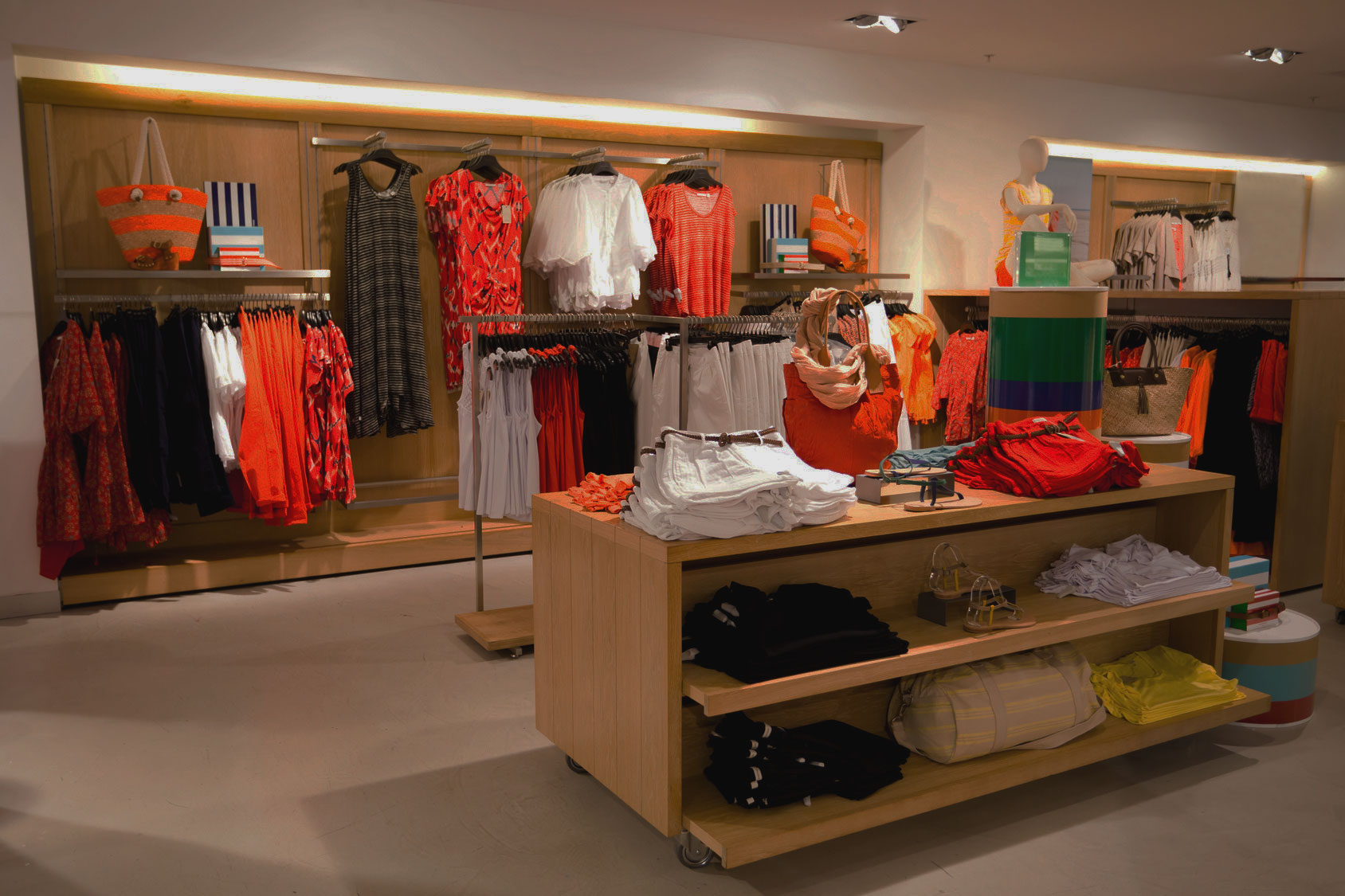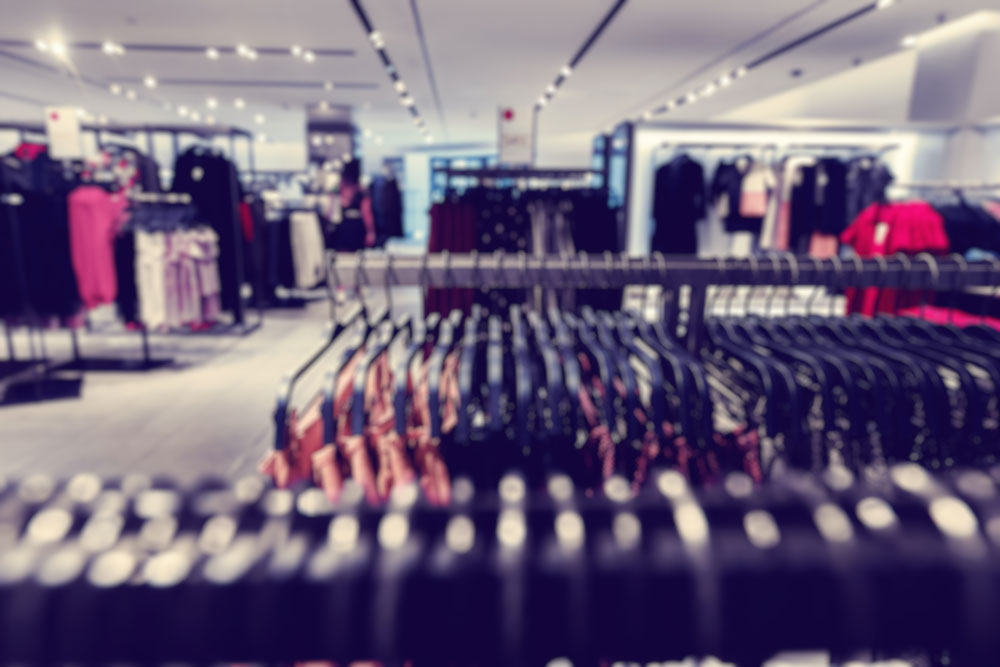RFID in Retail [Updated for 2024]
RFID adoption and usage continues to growth exponentially within the retail sector. Check out how retailers are finding value in RFID by improving inventory accuracy and minimizing supply chain issues.
RFID in Retail Sees Rapid Growth
Since the start of 2022 major retailers have begun issuing RFID tag mandates. Target, Macy’s, Nordstrom, and Walmart have all handed down RFID mandates to their respective partners and vendors. So, why is RFID in retail seeing such a boon?
RFID has many uses for retailers. It can improve inventory visibility and reduce cycle count times by 96%. RFID-enabled inventory counts can be performed more than once a week. With this technology, retailers can learn more about their customers and products. For example, a company like Macy’s can use RFID to list products for sale only when there is only one left. This data can be invaluable in the event of a disaster in the retail industry.
With RFID, retailers see inventory accuracy raise from 63% to 95%. RFID improves labor productivity by 96%, reduces cycle count time by 96%, and cuts out-of-stocks by as much as 50%. (Source: GS1 US)
Accurate inventory information is crucial for efficient supply chains. Traditional inventory count methods require intensive labor and are often inaccurate. RFID has improved inventory accuracy significantly by processing a wide range of data in just a few minutes. It eliminates the need for manual scanning of barcodes on individual objects and eliminating the need for touch-counting every object. RFID is the future of inventory tracking. Its many uses in retail are only limited by the imagination of their users.
RFID has many other uses for retailers. It can help increase transparency on the sales floor. For example, RFID helps stores reduce labor costs. It reduces cycle count time and allows staff to focus on customer service. It can help reduce labor costs by automating reorders at safe-stock levels. Furthermore, retailers can use RFID technology to automate replenishment and inventory processes. This technology allows retailers to monitor stock levels more efficiently and increase productivity.
Table of Contents
- How Does RFID Work in Retail?
- What are some use cases of RFID in retail?
- What is an RFID tag Mandate?
- What are the advantages of RFID Tagging?
- What types of products can you use RFID for?
- How does RFID help in apparel inventory management?
- How does RFID help in replenishing proper stock levels at each store?
- How can business get started with RFID?
How Does RFID Work in Retail?
Retailers such as Macy’s, Target, Walmart, Kohls, Nordstrom and several more are currently relying on RFID technology to ensure end-to-end supply chain efficiency. But, how exactly do retailers use RFID? In some cases, retailers apply RFID tags to their merchandise at the item-level. This means that certain products have RFID directly affixed to themselves.
Retailers often affix RFID tags directly to the following kinds of inventory:
- Jewelry
- Handbags
- Makeup kits
- Luxury brand shoes
RFID is commonly deployed in retail supply chains to improve inventory accuracy. From initial inbound shipments all the way to final sale, retailers can track their goods thanks to RFID. This allows for optimal inventory visibility which makes modern retailing easier. With more accurate inventory, retailers can cater to popular shopping trends such as BOPIS (buy online, pickup in store). Major retailers may require vendors to tag their own goods and shipments as well. This is known as a RFID tag mandate. Retailers provide vendors with guidelines and expectations for tagging merchandise. Vendors and manufacturers will then be expected to adhere to the mandate. Failure to tag items according to the retailer’s mandate can often lead to financial penalties, chargebacks on merchandise, or a dissolution of the vendor/retailer partnership altogether.
To learn more about what exactly RFID is, read our glossary article.

What are Some Use Cases of RFID in Retail?
RFID (Radio Frequency Identification) technology has numerous use cases in the retail industry, offering innovative solutions to optimize operations and enhance customer experiences. Here are some prominent use cases of RFID in retail:
- Inventory Management: RFID enables real-time and accurate inventory tracking, allowing retailers to monitor stock levels and locations of products throughout the supply chain. With RFID tags on individual items, employees can conduct inventory counts more efficiently and minimize stockouts, ensuring products are available when customers need them.
- Automated Checkout: RFID technology enables frictionless and automated checkout processes. RFID-enabled shopping carts or checkout counters can automatically scan and tally items, expediting the checkout process and reducing waiting times for customers.
- Enhanced Loss Prevention: RFID-based anti-theft systems can significantly reduce shoplifting and shrinkage. RFID tags on products trigger alarms if they leave the store without being deactivated at the point of sale, deterring potential thieves and increasing security.
- Product Authentication: RFID tags can be used to verify the authenticity of high-value or luxury items, helping customers identify genuine products and combat counterfeit goods.
- Personalized Marketing: RFID-enabled customer loyalty cards or smartphone apps can track customers’ preferences and purchase history, allowing retailers to offer personalized promotions and tailored recommendations.
- Smart Shelves: RFID-enabled smart shelves can automatically detect when items are low in stock or out of stock, triggering alerts for timely restocking. This ensures that shelves are consistently well-stocked, reducing missed sales opportunities due to inventory shortages.
- Fitting Room Experience: RFID tags on items can be detected when customers enter fitting rooms, enabling interactive mirrors or screens to display product details, suggest complementary items, and check for availability in different sizes or colors.
- Supply Chain Visibility: RFID facilitates end-to-end supply chain visibility. Manufacturers can tag products before shipping, and RFID tags can be tracked throughout the distribution process, allowing retailers to monitor the movement of goods in real-time and optimize their supply chain operations.
- Click-and-Collect Services: RFID technology streamlines click-and-collect services. RFID tags on items enable store employees to quickly locate and prepare online orders for customers, ensuring a seamless and efficient pickup experience.
- Returns Management: RFID tags can simplify the returns process. RFID-enabled labels on products enable faster and more accurate returns, improving customer satisfaction and optimizing reverse logistics operations.
- Promotional Display Effectiveness: RFID tags on promotional displays can track customer interactions and engagement, providing valuable insights into the effectiveness of marketing campaigns and in-store displays.
- Temperature-sensitive Products Monitoring: For items like perishable goods or pharmaceuticals that require specific temperature conditions, RFID tags can monitor temperature changes and ensure product integrity throughout the supply chain.
These use cases demonstrate the versatility and value of RFID technology in the retail industry, enabling retailers to enhance efficiency, improve customer experiences, and gain valuable insights into their operations. As RFID technology continues to evolve, its applications in retail are expected to expand, further revolutionizing the retail landscape.
What is an RFID Tag Mandate?
When a retailer has decided to deploy RFID into their supply chain, they will need to notify its vendors and manufacturing partners. Most major retailers source merchandise from hundreds of brands and suppliers. In order to ensure consistency through their supply chain, the retailer will announce how and when they expect their suppliers to add RFID tags to their merchandise.
There are numerous moving parts and fine details that go into a RFID mandate. Some mandates may require vendors to tag goods at the item level. This is typically reserved for high value items such as designer bags and jewelry. For consumer goods and apparel, it is generally expected that retail vendors and suppliers tag goods via shipped pallets and bulk packages. Once these pallets or packages are tagged, suppliers can send them to their retail partner for inbound reception. Retailers will likely have a system set up where shipments are reviewed and tags automatically scanned as they enter their facility. If merchandise is not tagged to the specifications of the retailer’s mandate, the supplier may get penalized or even have their entire order nullified. This is known as a chargeback, and it can cost suppliers and distributors millions of dollars. This is why it is absolutely vital for a retail vendor to make sure their RFID tagging operations are in compliance with its retailers.

What Are the Advantages of RFID Tagging in Retail?
RFID tags are often compared to barcodes since the tags will replace barcode scanning during inventory counting and inbound/outbound shipping and receiving. When comparing RFID to barcodes, RFID offers several major advantages for both retailers and suppliers.
- Faster Item Counting – In a matter of seconds, entire sections of RFID tagged inventory can be scanned. This is far more efficient and accurate than having to scan barcodes one at a time.
- Larger Data Storage – Standard 1D barcodes can store 85 characters. RFID tags on the other hand can store much more data. Alien’s Higgs 3 chip, for example, has a memory of 512 bits.
- Data Variety – Unlike barcodes, RFID tags can be built with sensors that can capture specific information. RFID tags with sensors can sense movement, temperature, humidity, or sudden falls.
- Durability – Barcodes have a tendency to disintegrate or peel off depending on how they are created and handled. RFID tags on the other hand can be ruggedized in order to handle harsh environments.
What types of products can you use RFID for?
RFID tags are typically applied on shipping pallets or bulk packages. However, there may be a sensible reason to tag individual items such as luxury .goods or high value inventory. As long as the goods are stored in an area where they can be scanned, there aren’t many limitations as to what kinds of products you can tag with RFID. In retail, equipment may be affixed with RFID tags. The versatility and flexibility of RFID tags make them suitable for various types of products, enabling efficient tracking, inventory management, and enhanced customer experiences. Some of the products that can benefit from RFID in retail include:
- Apparel and Fashion Items: RFID tags can be discreetly embedded in clothing, shoes, and fashion accessories. This allows retailers to track individual items accurately, manage inventory levels, and provide an improved shopping experience with features like smart mirrors in fitting rooms.
- Electronics and Consumer Electronics: RFID tags are commonly used in electronics to track high-value items such as laptops, smartphones, and tablets throughout the supply chain. This technology helps reduce theft and enhances stock management.
- Beauty and Cosmetics Products: RFID can be employed in beauty and cosmetics items like makeup, skincare products, and fragrances. It aids in inventory control and ensures that shelves are well-stocked to meet customer demands.
- Groceries and Food Products: RFID is used in the retail sector to track perishable items, like fruits, vegetables, and dairy products, throughout the supply chain. This helps monitor product freshness, reduce waste, and enhance inventory management.
- Pharmaceuticals and Medicines: RFID tags are utilized in the pharmaceutical industry to track and manage medications, ensuring better visibility and traceability. This helps prevent counterfeiting and improves drug inventory control.
- Home and Garden Products: RFID technology can be applied to various home and garden products, such as home appliances, gardening tools, and home improvement items. This enables efficient stock management and supports loss prevention efforts.
- Toys and Games: RFID tags can be integrated into toys and games, offering features like interactive experiences or age-appropriate product recommendations. They also help retailers monitor inventory levels and optimize restocking processes.
- Books and Media: RFID is used in libraries and bookstores to manage book collections efficiently. RFID tags on books enable streamlined checkouts, inventory control, and automated returns.
- Sporting Goods: RFID can be used in sporting goods, including equipment and apparel. It facilitates inventory tracking, helps manage rental items, and improves customer service by providing product information and availability.
- Jewelry and Luxury Items: RFID tags can be discreetly incorporated into high-end jewelry and luxury items. They serve as anti-theft devices and offer product authentication, ensuring customers receive genuine products.
- Office Supplies: In retail stores that sell office supplies, RFID technology can streamline inventory management, monitor stock levels, and enhance reordering processes.
- Pet Products: RFID can be used in pet-related items such as pet food, collars, and accessories, providing retailers with better control over stock levels and product information.
These examples demonstrate the broad applicability of RFID technology in the retail industry, ranging from fashion and electronics to groceries and luxury goods. RFID’s ability to enhance inventory management, improve security, and provide personalized customer experiences makes it a valuable asset for retailers across various product categories. With that said, RFID tags can struggle to read effectively when they are affixed to liquid materials such as liquor bottles or metals. This is because liquid and metals reflect radio waves, thus making it very hard for the tags to be read.
How does RFID help in apparel inventory management?
RFID and apparel are a perfect fit for many reasons. The biggest way RFID can help is by ensuring the most accurate apparel inventory numbers. In today’s omnichannel retail environment, it is vital for retailers to have accurate inventory data. Using RFID, retail employees can quickly scan inventory with a RFID reader and get highly accurate inventory counts in seconds. With more accurate inventory information, retailers can know when stock levels are low in a timely manner. That way, retailers can know when to order more inventory and avoid items going out-of-stock.
For higher value, apparel RFID can assist in loss prevention as well. Once inventory is tagged, employees or loss prevention specialists can be alerted when unauthorized movement of inventory occurs.
In some environments, simply locating inventory can be a challenge. Wedding dress shops, for example, have unique inventory needs that can be addressed with RFID. The location of a specific dress can be identified with an RFID reader that has a built-in geiger counter that can alert the employee when they are in close proximity. An RFID software application can also be used that can display the dress’ location via a floor map.
How does RFID help in replenishing proper stock levels at each store?
As we’ve discussed, maintaining accurate inventory numbers is a hugely important element to succeeding in the world of ecommerce. There are numerous ways RFID can help retailers manage inventory stock levels. RFID antennas can be carefully placed along shipping dock doors in order to ensure inventory is accurately accounted for as soon as it reaches the retail store. With this strategy, RFID can help retailers set their inventory accuracy levels to nearly 100% as soon as items enter the facility.
When items are brought to the shopping floor, employees can simply scan the goods in a batch to verify inventory counts. RFID software systems can alert managers when inventory is running low to avoid out-of-stock items.
How can businesses get started with RFID?
Retailers usually start with a RFID project or pilot test. Early on there is a lot of work and logistics that need to be squared away well before RFID is introduced into a retailers supply chain. The environment, required solutions, and overall expectations all play a role in how RFID will be utilized.
Organizations will then need to select their hardware and software. The hardware (RFID tags, antennas, readers, printers, etc.) will depend on the scope of the project. The software will depend on what you want to get out of your RFID investment. Some organizations may just want to run occasional cycle counts and receive basic inventory reports. On the other hand, some retailers may want a more robust tracking system to prevent theft or lost items. Regardless of the software you choose, the product should allow you to adequately track inventory, locate items, and update inventory data.
Once a cost prohibitive solution, RFID is a lot more affordable than ever before. And, organizations can start small. An initial RFID project can be done in a single stock room or department. Even a small RFID deployment can yield higher inventory numbers, improved employee efficiency, and a reduction in lost inventory.



